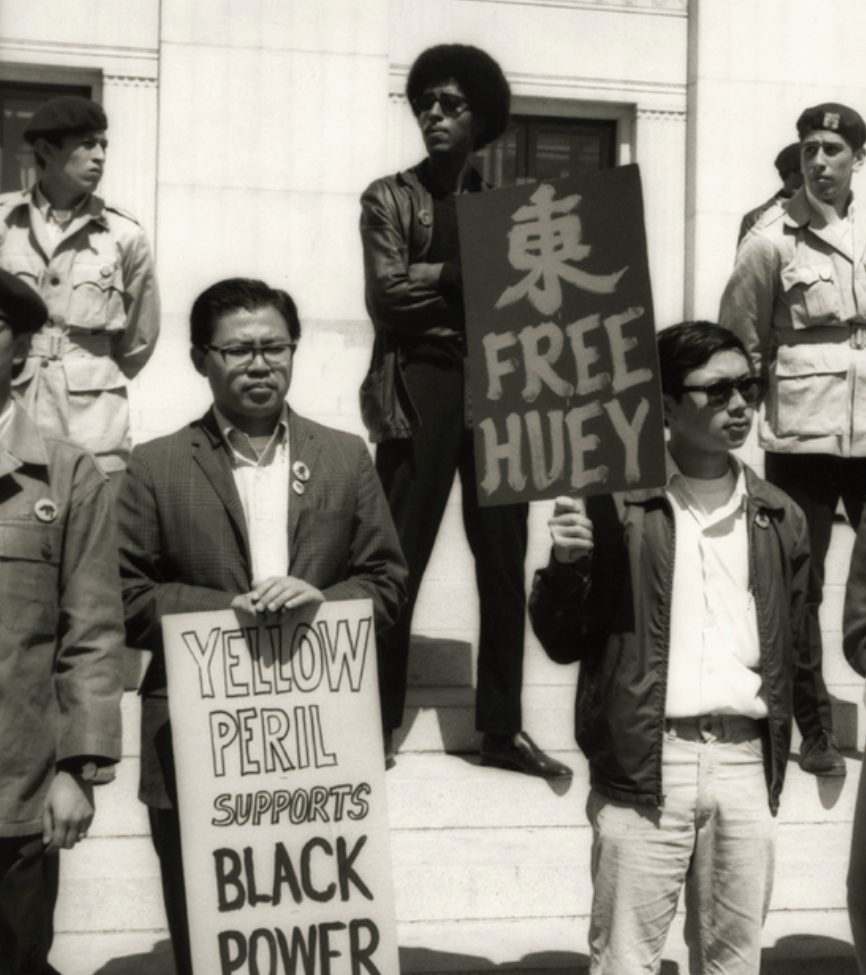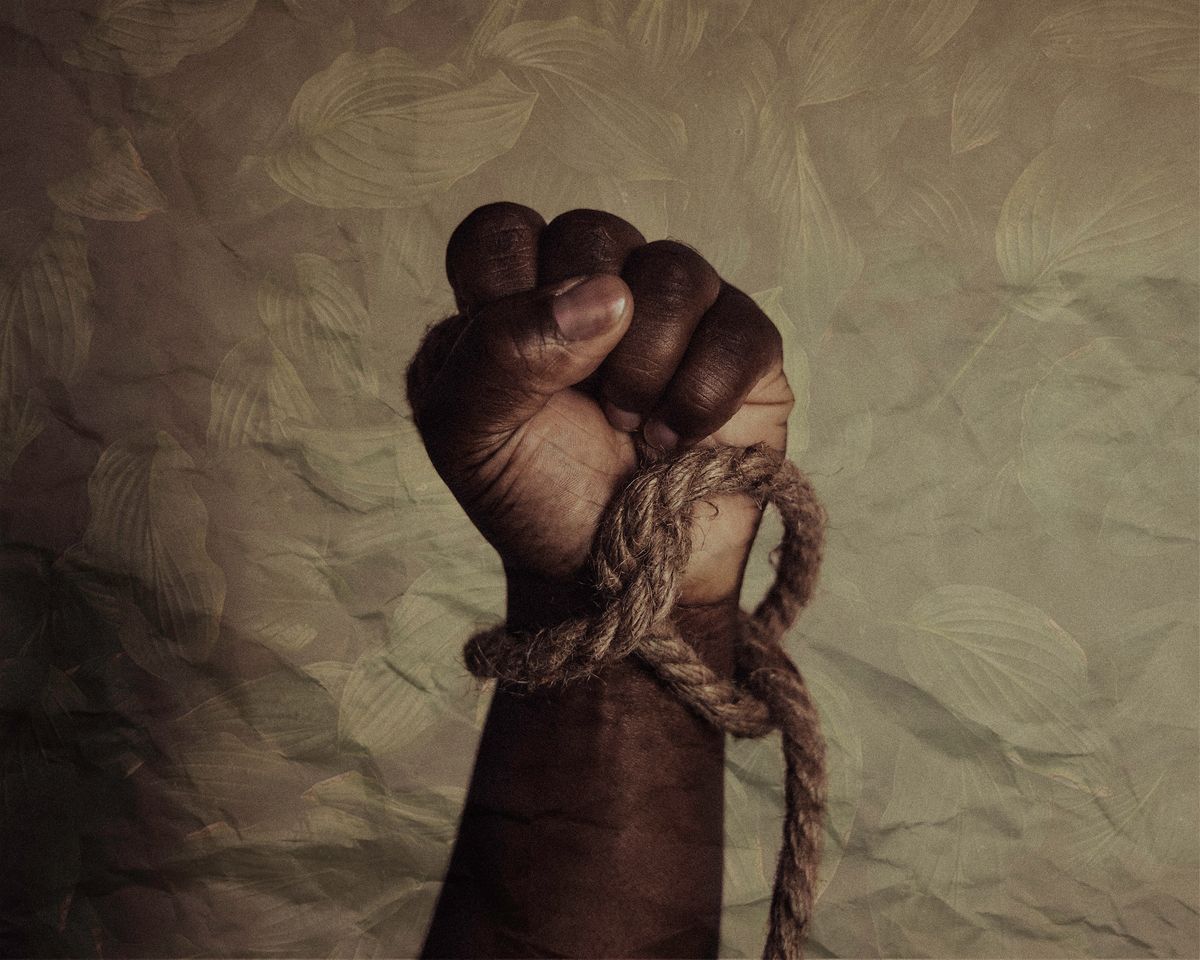|
OHF Weekly, Vol. 5 No. 11: Editor’s Letter, “What the Media Misses in AAPI and Black Relations,” “Rosa Parks: More Than a One-Hit Wonder,” and a quote by Alice Walker
Editor’s Letter💛 Hey Reader, How are you this week? From wild weather to unheard of policies regarding books, history, and grown-ups playing dress up, all I can say is what a time to be alive. You’ll have to excuse me, I’m up to my eyeballs in a couple of special projects for Our Human Family. Rest assured, we’ll share details when the time is right. In the meantime, please enjoy this redux of one my earlier articles on Confederate sympathizers, “How Come Nobody Can Let the Past Go.” Love one another. Clay Rivers
OHF Weekly Editor in Chief A friend of mine who supports leaving Confederate memorials where they are posed a question a few days ago: How come nobody can let the past go? And it’s a good question. Why can’t Confederate sympathizers let go of the past? There’s a faction of Americans who believe that removing these memorials is an attempt to erase history of those who fought and died in historic battles. I disagree. To get a proper perspective on the issue, let’s examine the reasons why the residents of thirteen states—Alabama, Arkansas, Florida, Georgia, Kentucky, Louisiana, Mississippi, Missouri, North Carolina, South Carolina, Tennessee, Texas, and Virginia—sought to not only secede from the United States of American, but fight to the death to preserve their way of life. The common response is: states’ rights. States’ rights to do what, self-govern? Well . . . there’s a bit more to the story than that. The website, civilwar.org, is a website/organization dedicated to preserving battlefields as part of our national heritage, scenes of struggle and sacrifice where American soldiers lost their lives. A noble cause. They also provide an online repository of documents pertaining to American history, but primarily the Civil War. The keepers of this website state — History is best understood by examining the documents and reading the words of those involved in the events one is studying. When these documents, photographs and other items were actually written at the time of the events, they are known as primary sources. From the Declaration of Independence, to the Emancipation Proclamation, and through letters, diary entries, and military orders you’ll find scores of primary sources here to read what people wrote at the time.
The Declaration of Causes of Seceding States is one such primary source and provides us with the definitive the reason why Southerners went to war . . . in their own words. And the reason may surprise you. What follows are a few excerpts from that document. GeorgiaA Declaration of the Immediate Causes which Induce and Justify the Secession of the State of Georgia from the Federal Union. The Peach state provides an exquisitely detailed account of how the United States government purposed to limit, restrain, and finally abolish slavery. To which they responded, “the south with great unanimity declared her purpose to resist the prohibition [of slavery] to the last extremity.” In their list of causes of secession, Georgia references slavery twenty-six (26) times. It’s very telling what’s on Georgia’s mind. MississippiA Declaration of the Immediate Causes which Induce and Justify the Secession of the State of Mississippi from the Federal Union. “In the momentous step which our State has taken of dissolving its connection with the government of which we so long formed a part, it is but just that we should declare the prominent reasons which have induced our course.
“Our position is thoroughly identified with the institution of slavery — the great material interest of the world. Its labor supplies the product which constitutes by far the largest and most important portions of commerce of the earth. These products are peculiar to the climate verging on the tropical regions, and by an imperious law of nature, none but the black race can bear exposure to the tropical sun. These products have become necessities of the world, and a blow at slavery is a blow at commerce and civilization … There was no choice left us but submission to the mandates of abolition, or a dissolution of the Union, whose principles had been subverted to work out our ruin. That we do not overstate the dangers to our institution, a reference to a few facts will sufficiently prove.”
“Our decision is made. We follow their footsteps. We embrace the alternative of separation; and for reasons here stated, we resolve to maintain our rights with the full consciousness of the justice of our course, and the undoubting belief of our ability to maintain it.”
Translation: We are pro-slavery because we need enslaved people to work the cotton fields because only Black people can withstand the tropical sun. Slavery is our money-maker, without it we have no commerce. If you won’t allow us this, we’re out of here. South CarolinaA Declaration of the Immediate Causes which Induce and Justify the Secession of the State of Mississippi from the Federal Union. South Carolina provides a most meticulous accounting of United States history that goes back to 1765, and the rights of FREE AND INDEPENDENT STATES (their caps, not mine) standing against the British monarchy, the Declaration of Independence, and how each state had separate control over its own institutions, including “the right of property in slaves.” “We affirm that these ends for which this Government was instituted have been defeated, and the Governments itself has been made destructive of them by the action of non-slaveholding States. Those States have assumed the right of deciding upon the propriety of our domestic institutions; and have denied the right of property established in fifteen of the States and recognized by the Constitution; they have denounced as sinful the institution of slavery; they have permitted open establishment among them of societies, whose avowed object is to disturb the peace and to eloping the property of the citizens of the other States. They have encouraged and assisted thousands of our slaves to leave their homes; and those who remain, have been incited by emissaries, books and pictures to servile insurrection.”
“This sectional combination for the submersion of the Constitution, has been aided in some of the States by elevating to citizenship, persons who, by the supreme law of the land, are incapable of becoming citizens; and their votes have been used to inaugurate a new policy, hostile to the South, and destructive of its beliefs and safety.”
They go on to say that the North has invested in a great political error with the sanction of more erroneous religious belief, and then declares itself as a separate and independent State (country) to do whatever they want to do. Hmph! TexasA Declaration of the Immediate Causes which Induce and Justify the Secession of the State of Mississippi from the Federal Union. “ … she (Texas) was received as a commonwealth holding, maintaining and protection the institution known as negro slavery — the servitude of the African to the white race within her limits — a relation that had existed from the first settlement of her wilderness by the white race, and which her people intended should exist in all future time.”
“ … all white men are and of right ought to be entitled to equal civil and political rights; that the servitude of the African race, as existing in these States, is mutually beneficial to both bond and free, and is abundantly authorized and justified by the experience of mankind, and the revealed will of the Almighty Creator, as recognized by all Christian nations; while the destruction of the existing relations between the two races, as advocated by our sectional enemies, would bring inevitable calamities upon both and desolation upon the fifteen slave-holding states.”
“ . . . in all future time.” Just let that sink in. Translation: You knew we stood for slavery when we came into the Union, and to upset the apple cart now would bring some very bad juju between whites and blacks. God said that’s the way it should be. VirginiaThe Secession Ordinance. An ordinance to repeal the ratification of the Constitution of the United States of American by the State of Virginia, and to resume all the rights and powers granted under said constitution. “The people of Virginia, in their ratification of the Constitution of the United States of America, adopted by them in Convention on the twenty-fifth day of June, in the year of our Lord one thousand seven hundred and eighty-eight, having declared that the powers granted under the said Constitution were derived from the people of the United States, and might be resumed whensoever the same should be perfected to their injury and oppression; and the Federal Government, having perverted said powers, not only to the injury of the people of Virginia, but to the oppression of the Southern Slaveholding States.”
“ … do declare that the said Constitution of the United States of America is no longer binding on any of the citizens of this State.”
The full text of those five states’ declarations can be read here. When people invoke warm, fuzzy images of a southern way of life, they’re invoking an imaginary time of mint juleps, magnolia blossoms, hoops skirts, chivalry, pecan pie, and the supposition that all was right in the South. In reality, they’re referring to a time long gone with the wind and an economic system for thirteen states that perpetuated a lifestyle of genteelness transplanted from British aristocracy veneered over inhumane oppression meted out in celebrated events of murder, lynchings, rape, and Black families torn asunder, all in the name of King Cotton. Men fought, died, and were ultimately defeated championing a deeply flawed and morally reprehensible lifestyle built on the broken and bloodied backs of black Americans . . . people who look like me . . . my ancestors. And from whom American norms such as freedom, equality, education, and religion were withheld. You cannot have the glory of plantation life with its southern hospitality, belles, and gentlemen without the horrors of the institution of slavery to provide the economic means to support it. If we lived in a society in which people regarded these monuments in the unvarnished context of the actual damage inflicted to generations of Black Americans, as well as the 620,000 deaths of soldiers, all in the name of a brutal cause, I doubt anyone would want them to stand as tributes. But that’s not the world we live in. These monuments serve as a touchstone to racism as evidenced by gatherings like the ones pictured by the image above. Note: Nazi culture is banned in Germany. My white brothers and sisters, if you don’t support that position, it’s incumbent upon you to make that known to those who do (white supremacists, Nazi sympathizers, white nationalists). When the descendants of Civil War generals speak out in favor of removing monuments to their predecessors, that should be a sign to all that the time has come to remove them from public spaces. So tell me why can’t that portion of the citizenry “let go of the past” and stop validating, lauding, and tacitly endorsing the efforts of white supremacists, Nazis, and the Confederacy to destroy democracy? How does elevating their efforts to the same plane as those who stand for equality, civil and human rights show respect and love to one another? It doesn’t. It bears no resemblance to love and respect in any way, shape or form. Removing Confederate memorials is not an attempt to erase history. It’s a monumental first step in healing. Originally published at Medium.com.
FROM OUR WRITERSBy Sabrina Bryant History documents a legacy of thriving coexistence when these two groups unite against white supremacy Asian American protestors supporting the freedom of Huey P. Newton, co-founder of the Black Panther Party. Over this past year, there has been an uptick in hate crimes perpetrated against the Asian American and Pacific Islander (AAPI) community. Unfortunately, many of these attacks have come at the hands of African Americans. This has prompted many in the media and online platforms to push the narrative that there are heated tensions between the Asian and African American communities. And some imply that all xenophobic incidents are originating solely from the Black community. This narrative is an age-old tactic of white supremacy to keep these communities at odds with each other. While there are elements of anti-Black sentiment among older generations in the Asian community, others are working toward allyship. History shows that these two groups have not only existed peacefully with each other but have in fact thrived by joining forces to fight the oppression they both faced under white supremacy. How It All BeganThe narrative of tension between the two communities began after World War II. The rise in African Americans asserting their claims for the same rights as their white counterparts led to the Asian and other communities of color banding together in support. As a method of pushback, the media began asserting the narrative of the model minority. Its purpose was twofold: first to create a wedge between the two communities, and second to cast doubt on the fact that racism had impacted Black progress. According to Harvard’s online publication The Practice, “the term model minority has often been used to refer to a minority group perceived as particularly successful, especially in a manner that contrasts with other minority groups.” The classification gave Asians and Asian Americans a certain level of privilege and access under the white supremacy framework, as well as a reason to distance themselves from African Americans who were stereotyped as lazy and criminal. Suddenly, everyone was making comparisons between Asians and African Americans. As it is with many older people in the AAPI community, many African Americans only have interactions with people of Asian descent when they are patronizing their businesses. The most popular at the time was a story by sociologist William Petersen in 1966 titled “Success Story, Japanese-American Style.” His highly influential piece implied that while Japanese Americans had been placed in internment camps and faced other forms of discrimination, they could still overcome those obstacles and rise to success by being industrious and law-abiding citizens. Describing African Americans, he says that when faced with opportunities to succeed, “the minority’s reaction to them is likely to be negative—either self-defeating apathy or a hatred so all-consuming as to be self-destructive.” Still today many in the AAPI community have internalized the model minority myth and believe that if only Black people worked harder or obeyed the law, they wouldn’t be so far behind. However, scholars have argued that it was not merely hard work that allowed some Asians to thrive, and discrimination was not as prevalent as it is for African Americans and opportunities were more plentiful for them. Nathaniel Hilgers, an economist at Brown University, wanted to get to the truth of why some Asians were closing the racial wealth gap between them and white individuals. So he analyzed past census records to track the incomes of Black, white, and American-born Asian people during the early to mid-20th century. Read the full article at OHF Weekly.
By Sabrina Bryant It’s that time of year again when schools across the country trot out the five or six Black history figures whose stories have been shrunken and narrowed down to fit this country’s safe version of what Black history should be. But there were countless other African Americans whose contributions are worth sharing. And those choice few who made the “safe” list have more to their stories and lives than the accomplishments that were cherry-picked to teach school children during Black History Month. Rosa Parks, whose birthday happens to fall in Black History Month on February 4th (along with our awesome founder Clay Rivers), is one who makes the list each year as we are told how she was too tired to relinquish her seat to a white patron and so started a movement. But there was much more to Mrs. Parks’ story than just that one moment of tired defiance. Life Before the Bus IncidentLong before Rosa Parks decided she was tired of the status quo, she was a young girl born in Tuskegee, Alabama to a carpenter father and schoolteacher mother. Her mother, Leona McCauley, would be her first teacher, homeschooling Rosa until she turned eleven. She was then sent to get a formal education at the Montgomery Industrial School for Girls. This was a school started by two white Christian women, Alice White and H. Margaret Beard, who wanted to “provide an education as well as a sense of pride to their students during a time of racial segregation and to produce teachers who would go on to inspire others” (Harmon, 2007). In her autobiography Rosa Parks: My Story, she credits Alice White, the school’s founder and principal, with shaping her sense of self: “I was a person with dignity and self-respect who should not set my sights lower than anyone else because I was Black.” There were many other notable African American women who attended that school who would later go on to affect change both during and after the civil rights movement. Included among the alumni were Johnnie Carr, Erna Dungee Allen, and Mahala Dickerson, Alabama’s first African American female attorney. According to the Encyclopedia of Alabama, Alice White followed Booker T. Washington’s educational program of industrial studies with a focus on self-improvement and made a point to also include rigorous academic training as well—everything Black girls would need to prepare them for the challenges of a racist and segregated country. After leaving the Montgomery Industrial School for Girls, Parks continued her education at Alabama State Teachers College High School but had to leave before finishing to care for her ailing grandmother. She would eventually go back and get her diploma with the support of her husband, Raymond Parks. Read the full article at OHF Weekly.
Final Thoughts
|



